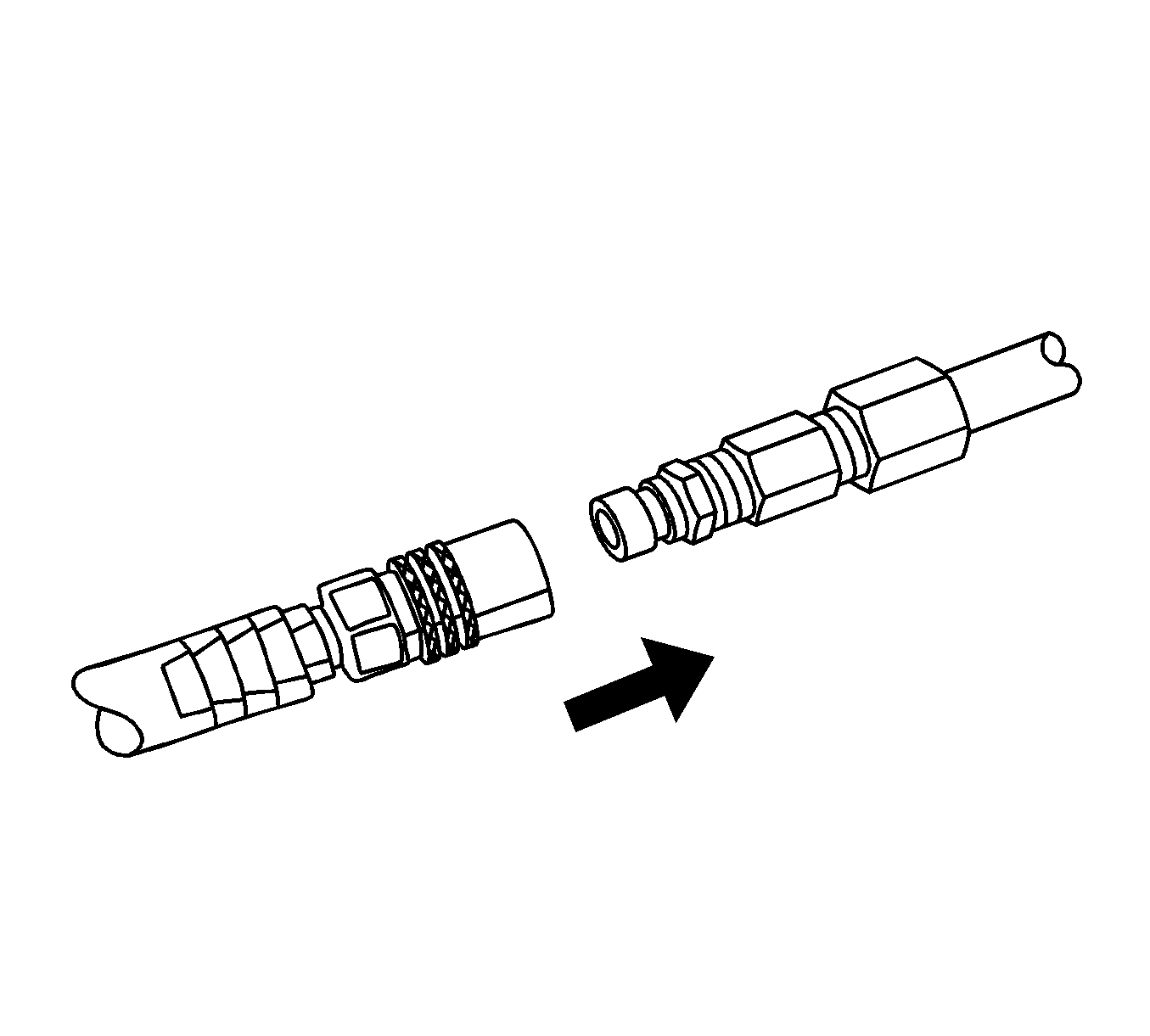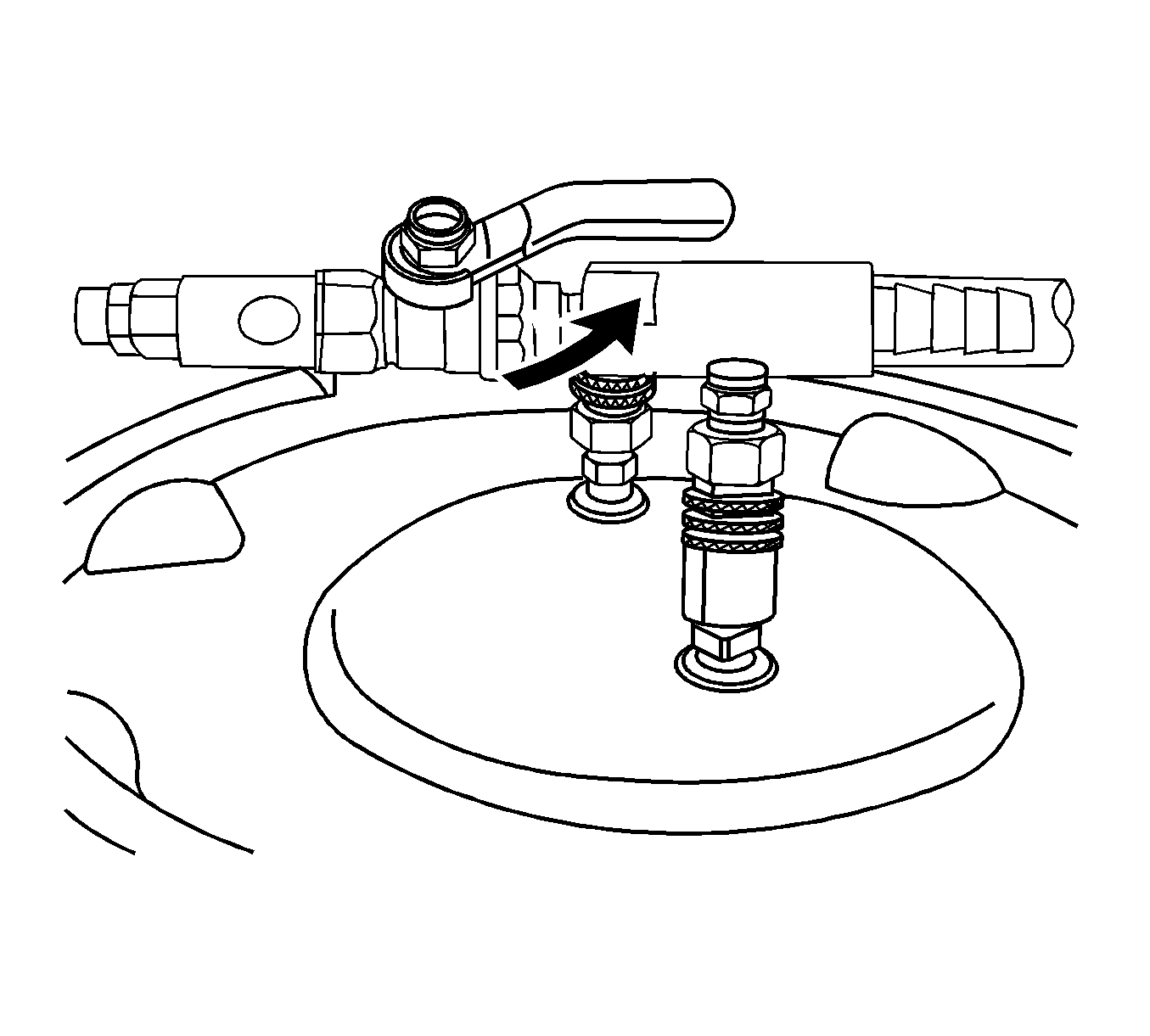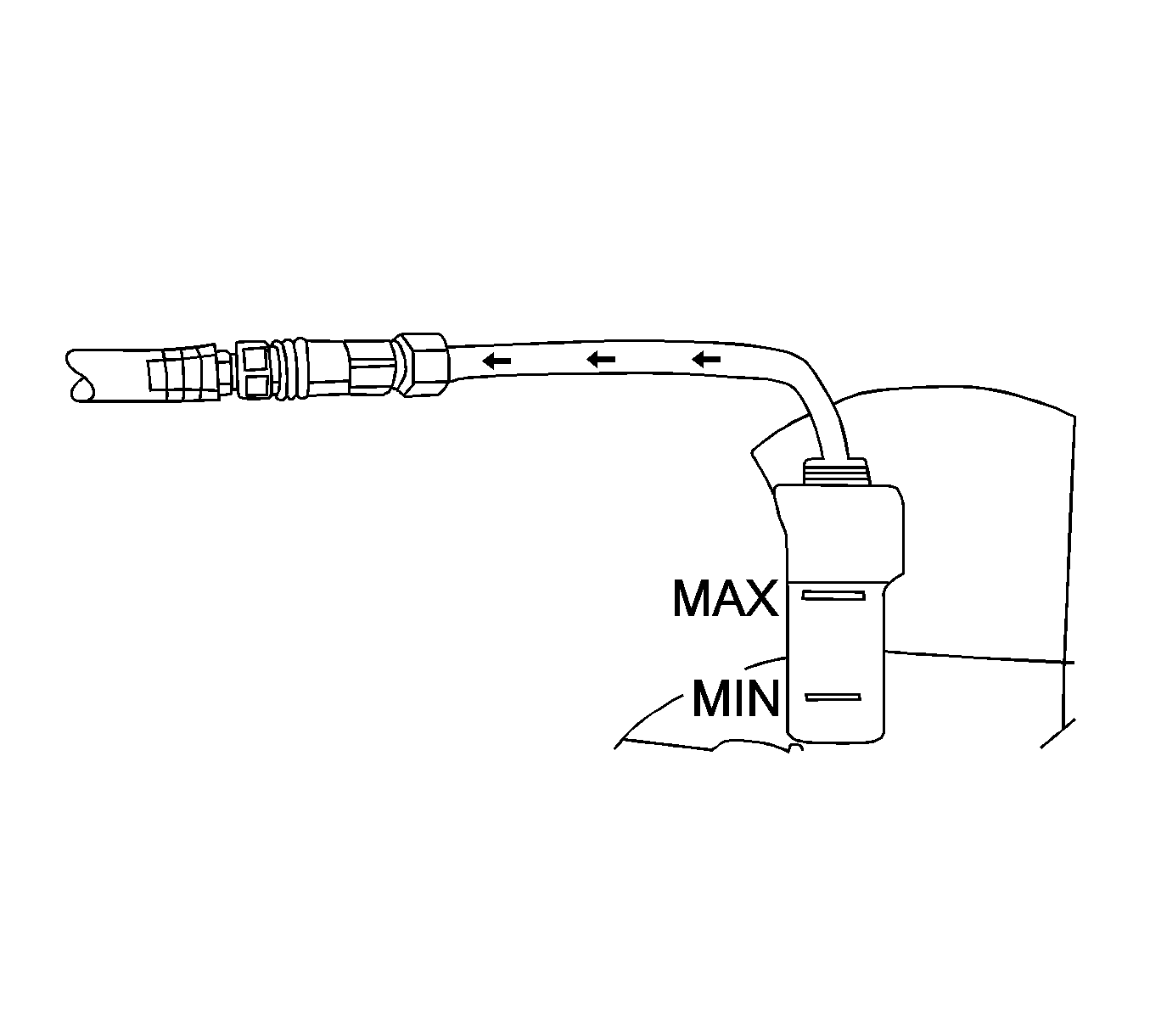Cooling System Draining and Filling Static Fill-LE5, L61
Special Tools
J 26568 Coolant and Battery Fluid Tester
Draining Procedure
- Remove the coolant pressure cap.
- Raise and support the vehicle. Refer to Lifting and Jacking the Vehicle.
- Place a drain pan under the right side lower radiator mount.
- Open the radiator drain cock.
- Drain the cooling system.
- If a complete block drain is required, place a drain pan under the water pump drain.
- Remove the water pump drain plug.
- Drain the cooling system.
- Inspect the appearance of the engine coolant for discoloration:

Warning: To avoid being burned, do not remove the radiator cap or surge tank cap while the engine is hot. The cooling system will release scalding fluid and steam under pressure if radiator cap or surge tank cap is removed while the engine and radiator are still hot.
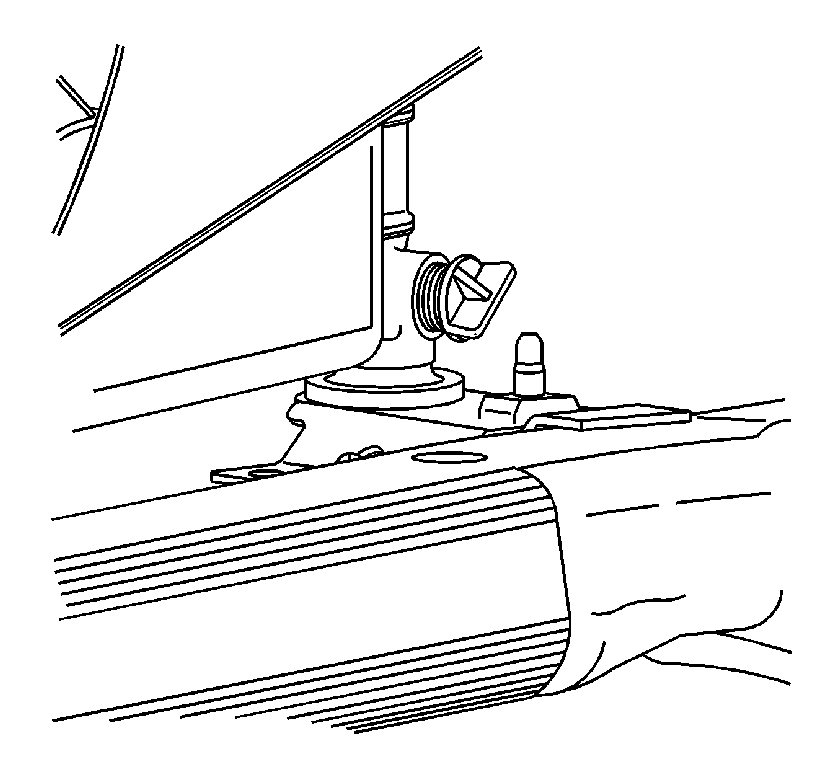
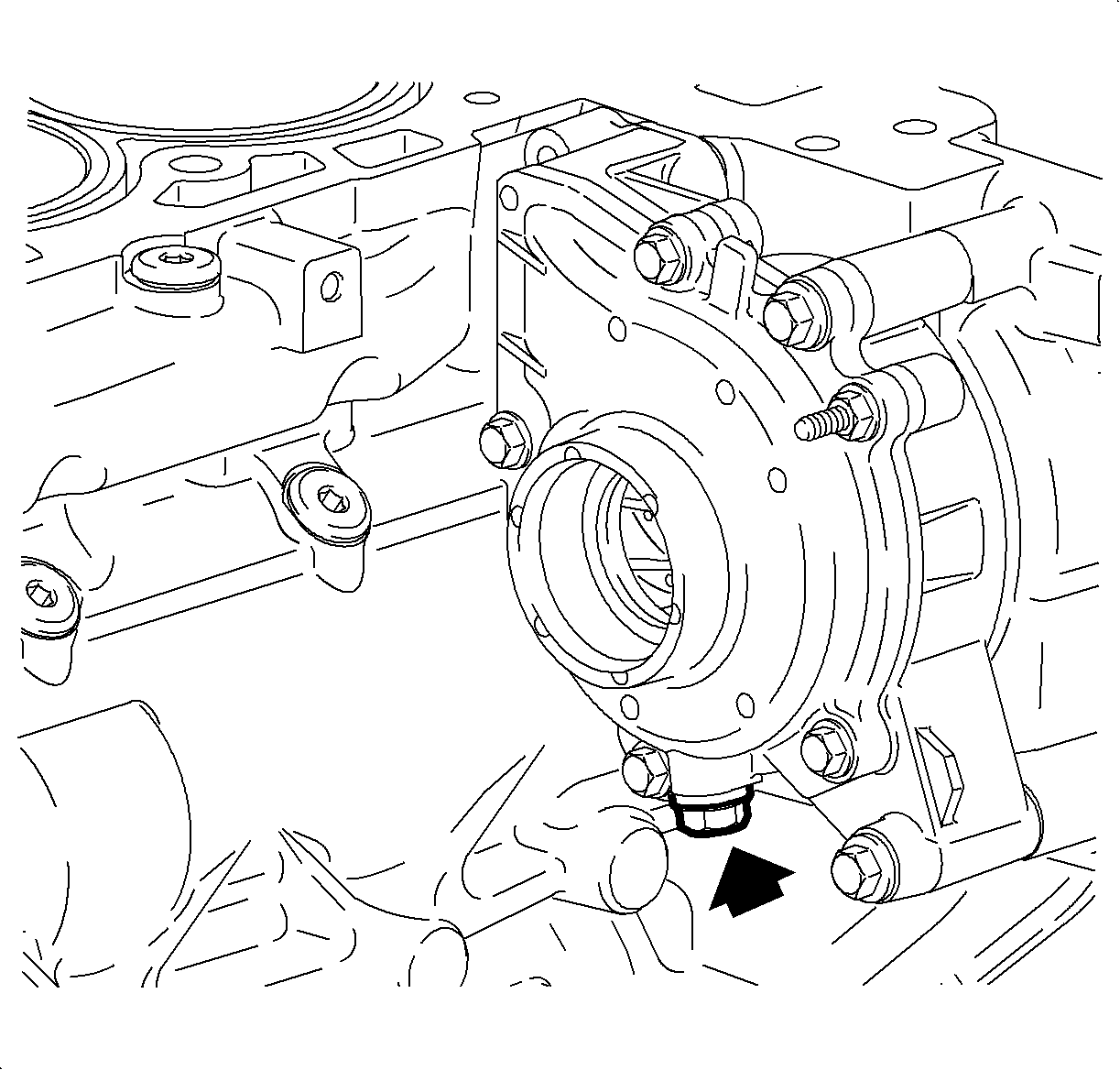
| • | Discolored--Follow the flush procedure. Refer to Coolant System Flushing. |
| • | Normal in appearance--Follow the filling procedure. |
Filling Procedure
- Close the radiator drain cock by hand.
- Install the water pump drain plug (1) if removed during the draining process.
- Lower the vehicle.
- Slowly add a mixture of 50/50 DEX-COOL antifreeze and deionized water to the cooling system until the coolant level reaches and maintains slightly above the cold fill line on the surge tank. Refer to Approximate Fluid Capacities.
- Install the coolant pressure cap.
- Start the engine.
- Run the engine at 2,000-2,500 RPM for 3 minutes.
- Allow the engine to idle for 30 seconds.
- Shut the engine off.
- Top off the coolant as necessary.
- Fill the coolant reservoir to the cold fill line.
- Inspect the cooling system for leaks.
- Inspect the concentration of the coolant mixture using J 26568 .
- Rinse away any excess coolant from the engine and the engine compartment.
Caution: The procedure below must be followed. Improper coolant level could result in a low or high coolant level condition, causing engine damage.

Caution: Refer to Fastener Caution in the Preface section.

Tighten
Tighten the plug to 22 N·m (16 lb in).
Note: Use a 50/50 mixture of DEX-COOL antifreeze and clean, drinkable water. It is necessary to maintain the coolant level near the cold fill line on the surge tank to insure all the air has been purged from the cooling system.

Cooling System Draining and Filling Static Fill-LNF
Draining Procedure
- Remove the pressure cap (1) from the radiator fill tube.
- Raise and support the vehicle. Refer to Lifting and Jacking the Vehicle.
- Place a drain pan under the right side lower radiator mount.
- Open the radiator drain cock.
- Drain the cooling system.
- If a complete block drain is required, place a pan under the water pump drain.
- Remove the water pump drain plug (1).
- Drain the cooling system.
- Inspect the appearance of the engine coolant for discoloration:
Warning: To avoid being burned, do not remove the radiator cap or surge tank cap while the engine is hot. The cooling system will release scalding fluid and steam under pressure if radiator cap or surge tank cap is removed while the engine and radiator are still hot.
Note: Draining the cooling system with the pressure cap installed will syphon the coolant from the overflow tank.
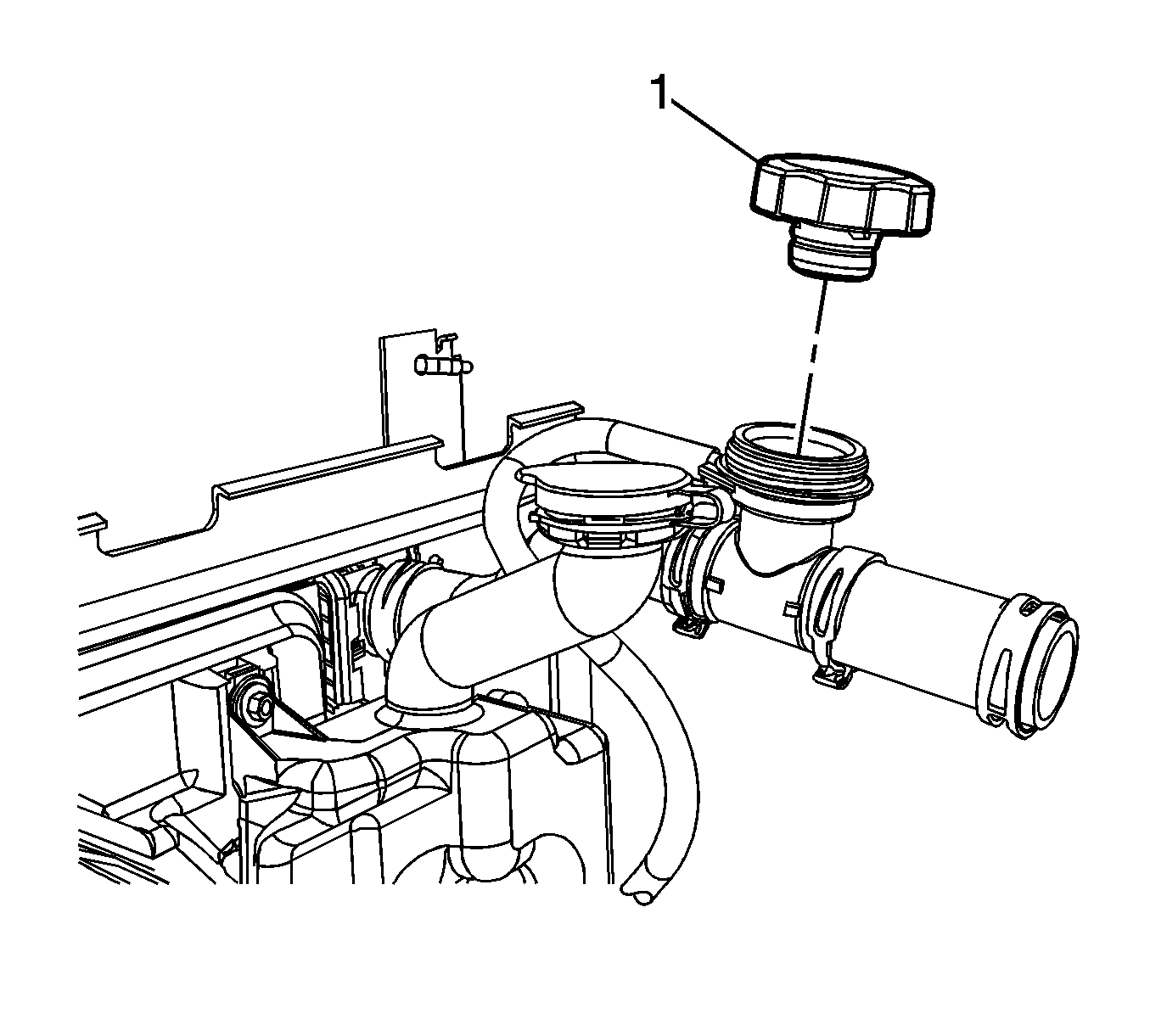
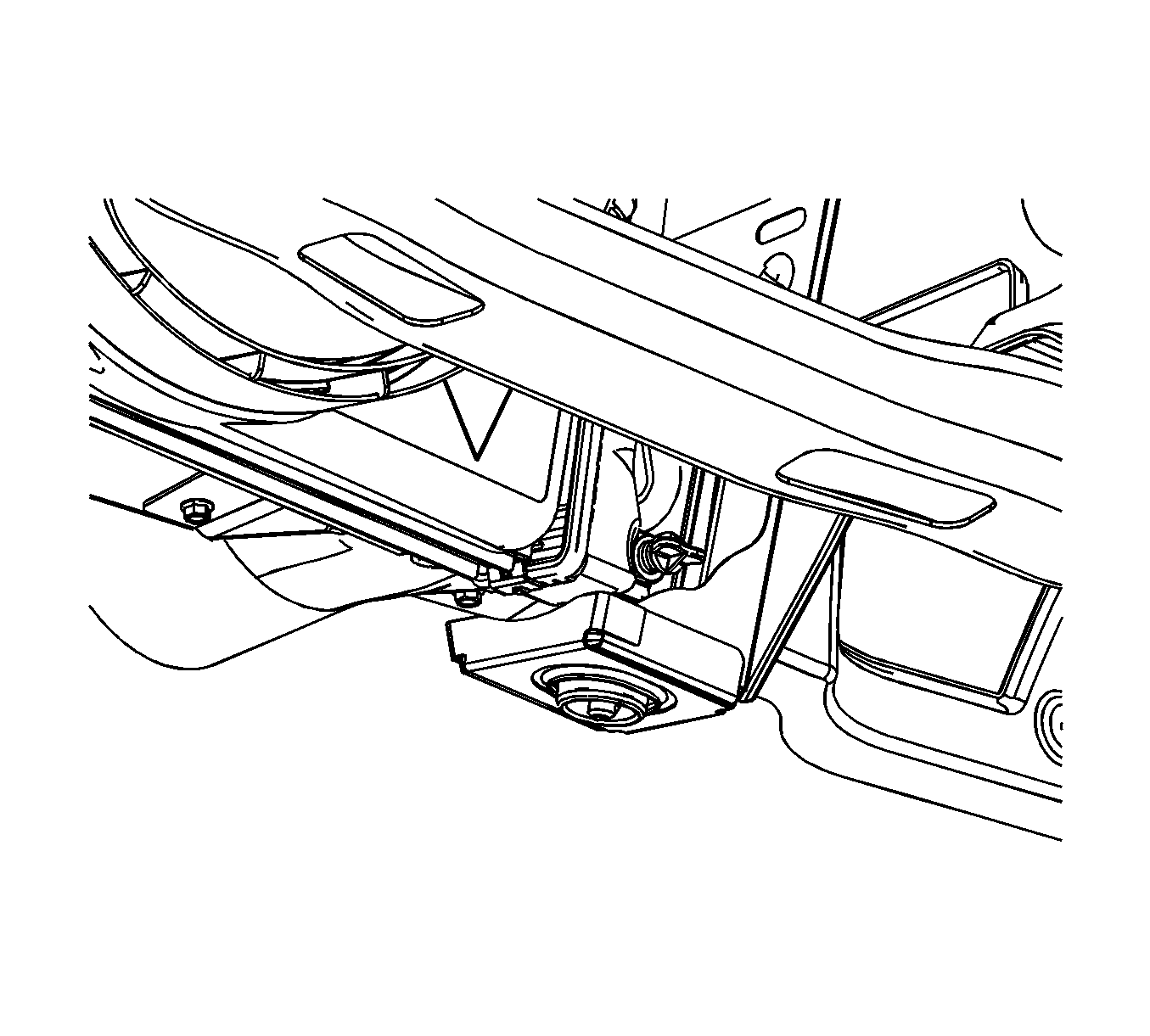
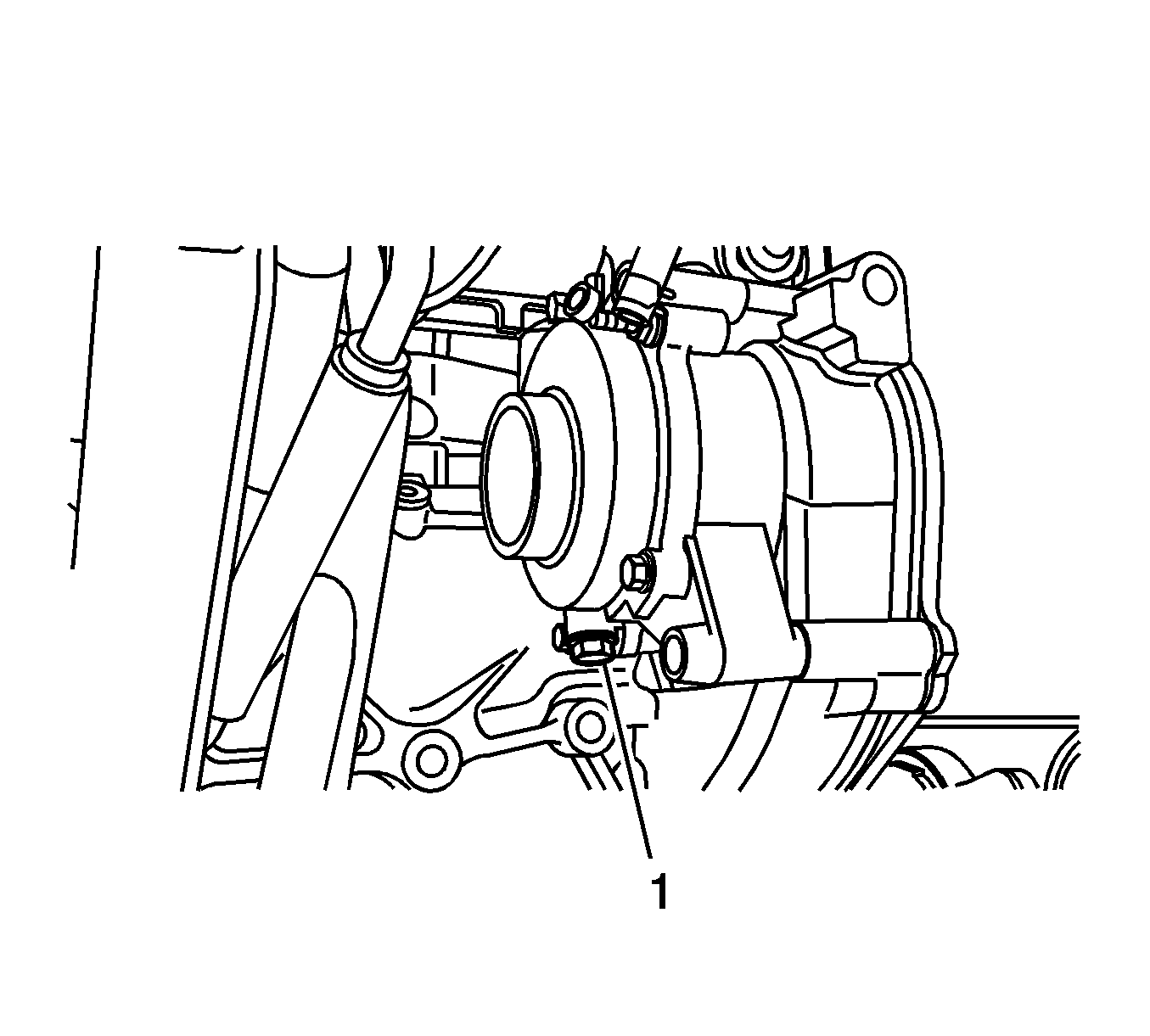
| • | Discolored--Follow the flush procedure. Refer to Coolant System Flushing. |
| • | Normal in appearance--Follow the filling procedure. |
Filling Procedure
- Close the radiator drain cock by hand.
- Install the water pump drain plug if removed during the draining process (1).
- Lower the vehicle.
- Slowly add a mixture of 50/50 DEX-COOL antifreeze and clean, drinkable water to the cooling system until the coolant level reaches the top of the radiator fill tube and stabilizes.
- Slowly add a mixture of 50/50 DEX-COOL antifreeze and clean, drinkable water to the overflow bottle until the level reaches the specified mark.
- Start the engine.
- Install the pressure cap (1).
- Run the engine at idle for 5 minutes in PARK (P) (Automatic) or NEUTRAL (N) (Manual) with the parking brake on.
- Turn off the engine and allow it to cool and the system pressure to decrease.
- Remove the surge tank cap (1).
- Add coolant to the cooling system until the level reaches the top of the radiator fill tube stabilizes.
- Install the surge tank cap (1).
- Run the engine at idle for an additional 5 minutes.
- Turn off the engine and allow it to cool.
- Inspect the cooling system for leaks.
- Rinse away any excess coolant from the engine and the engine compartment.

Caution: The procedure below must be followed. Improper coolant level could result in a low or high coolant level condition, causing engine damage.
Caution: Refer to Fastener Caution in the Preface section.

Tighten
Tighten the drain plug to 22 N·m (16 lb ft).
Note: Use a 50/50 mixture of DEX-COOL antifreeze and clean, drinkable water.

Cooling System Draining and Filling GE 47716 Fill
Special Tools
| • | J 26568 Coolant and Battery Fluid Tester |
| • | J 42401 Radiator Pressure Adapter |
| • | GE-47716 Vac N Fill Coolant Refill Tool |
Draining Procedure
- Remove the pressure cap.
- Raise and support the vehicle. Refer to Lifting and Jacking the Vehicle.
- Place a drain pan under the right side lower radiator mount.
- Open the radiator drain cock.
- Drain the cooling system.
- If a complete block drain is required, place a drain pan under the water pump drain.
- Remove the water pump drain plug (1).
- Drain the cooling system.
- Inspect the appearance of the engine coolant for discoloration:
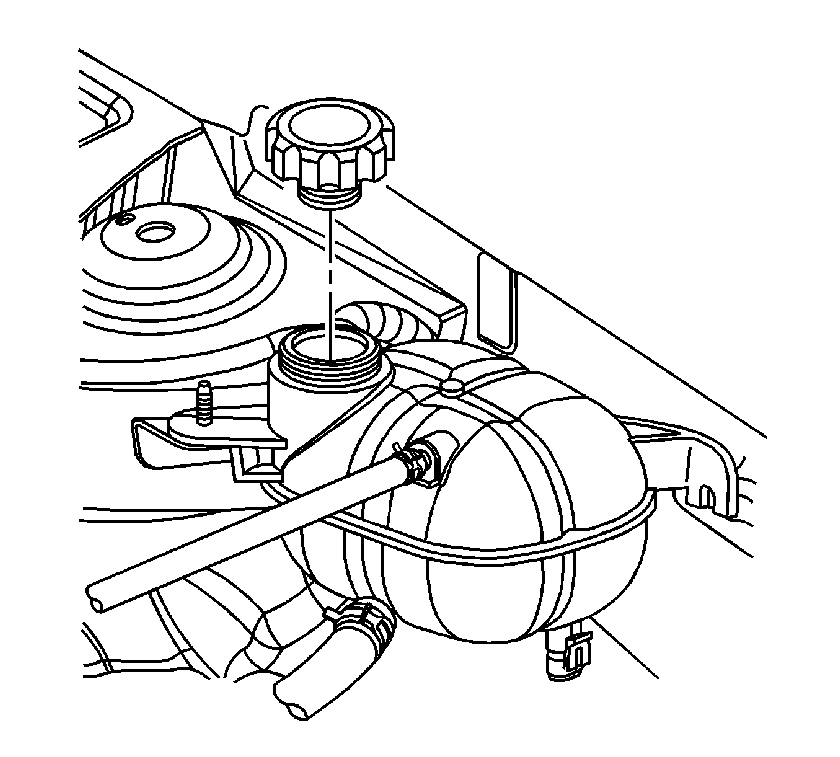
Warning: To avoid being burned, do not remove the radiator cap or surge tank cap while the engine is hot. The cooling system will release scalding fluid and steam under pressure if radiator cap or surge tank cap is removed while the engine and radiator are still hot.

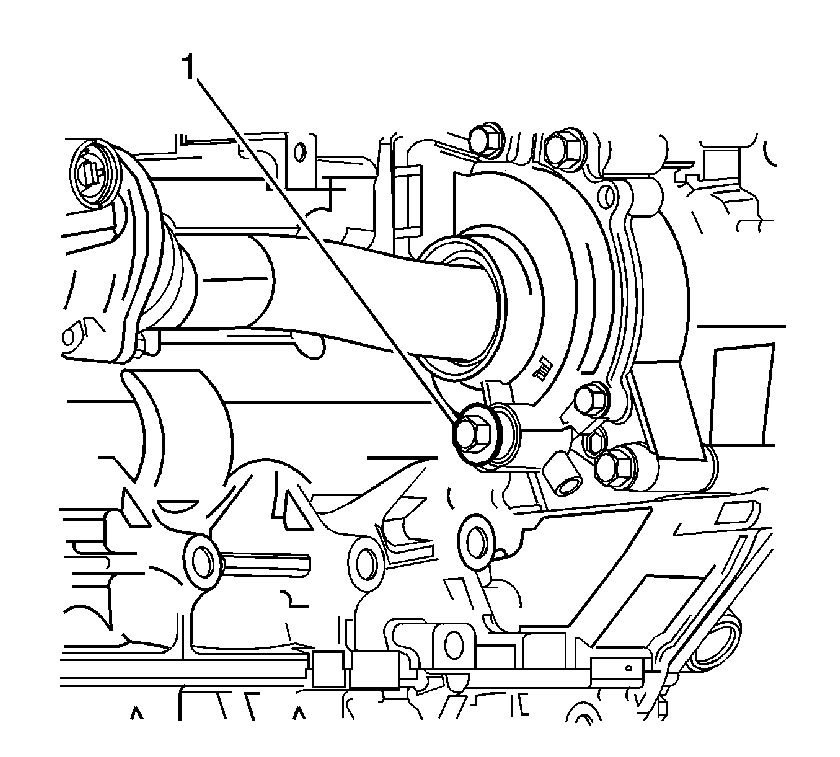
| • | Discolored--Follow the flush procedure. Refer to Coolant System Flushing. |
| • | Normal in appearance--Follow the filling procedure. |
Vac-N-Fill Procedure
- Close the radiator drain cock by hand.
- Install J-42401-2 into the surge tank fill neck.
- Install J-42401-3 to the surge tank fill neck.
- Attach the Vac N Fill cap to the J-42401-3.
- Attach the vacuum gage assembly to the Vac N Fill cap.
- Attach the fill hose to the barb fitting on the vacuum gage assembly.
- Pour the coolant mixture into the graduated reservoir.
- Place the fill hose in the graduated reservoir.
- Install the vacuum tank on the graduated reservoir with the fill hose routed through the cut-out area in the vacuum tank.
- Attach the venturi assembly to the vacuum tank.
- Attach a shop air hose to the venturi assembly.
- Attach the vacuum hose to the vacuum gage assembly and the vacuum tank.
- Open the valve on the venturi assembly. The vacuum gage will begin to rise and a hissing noise will be present.
- Continue to draw vacuum until the needle stops rising. This should be 610-660 mm Hg (24-26 in Hg).
- To aid in the fill process, position the graduated reservoir above the coolant fill port.
- Slowly open the valve on the vacuum gage assembly. When the coolant reaches the top of the fill hose, close the valve. This will eliminate air from the fill hose.
- Close the valve on the venturi assembly.
- If there is a suspected leak in the cooling system, allow the system to stabilize under vacuum and monitor for vacuum loss.
- Open the valve on the vacuum gage assembly. The vacuum gage will drop as coolant is drawn into the system.
- Once the vacuum gage reaches zero, close the valve on the vacuum gauge assembly and repeat steps 10-16.
- Detach the Vac N Fill cap from the vehicle's coolant fill port.
- Add coolant to the system as necessary.
- Inspect the concentration of the coolant mixture using J 26568 .
- Detach the vacuum hose from the vacuum gage assembly.
- Attach the extraction hose to the vacuum hose.
- Open the valve on the venturi assembly to start a vacuum draw.
- Use the extraction hose to draw out coolant to the proper level.
- The vacuum tank has a drain valve on the bottom of the tank. Open the valve to drain coolant from the vacuum tank into a suitable container for disposal.

Caution: The procedure below must be followed. Improper coolant level could result in a low or high coolant level condition, causing engine damage.
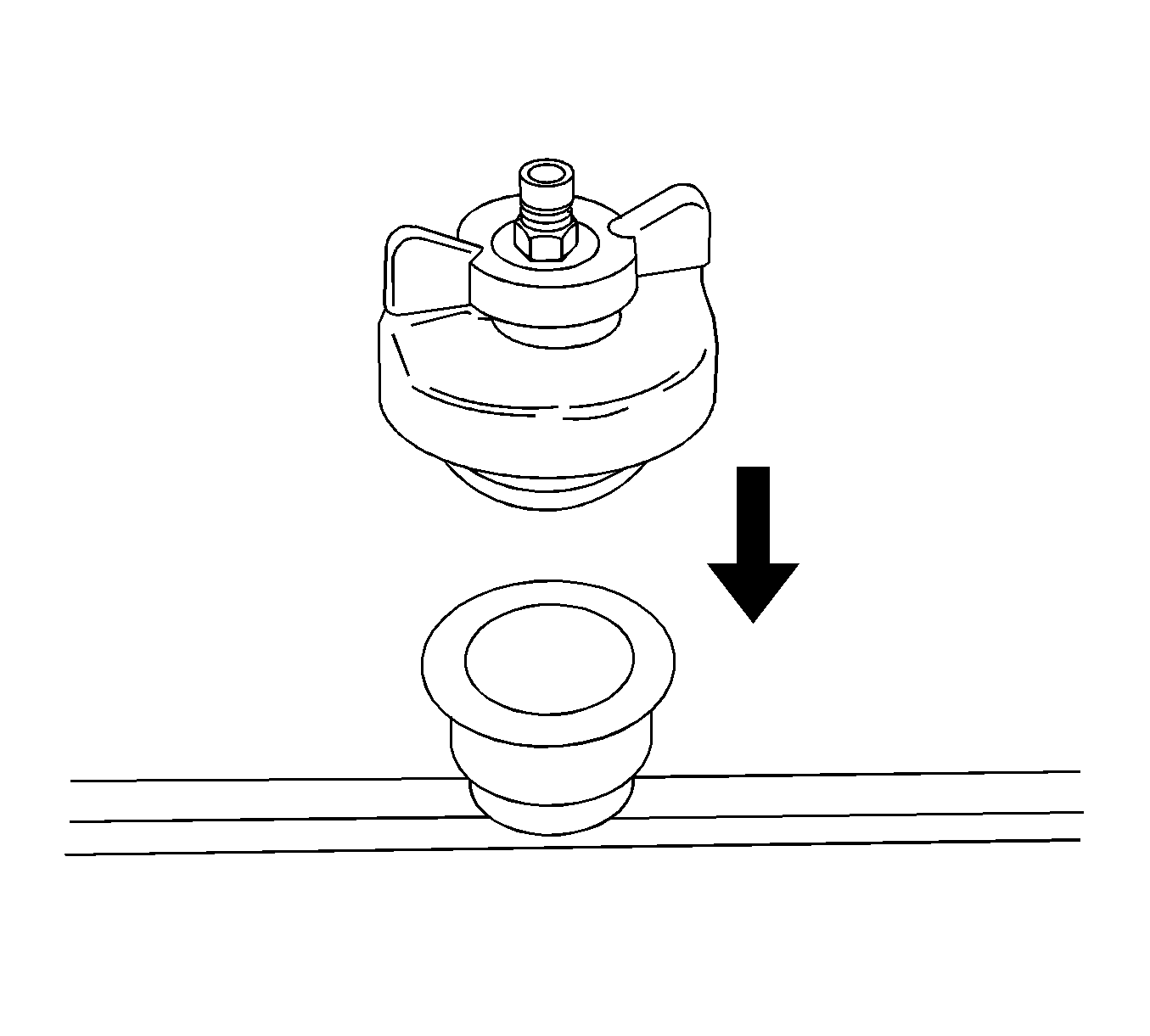
Note: To prevent boiling of the coolant/water mixture in the vehicle’s cooling system, do not apply vacuum to a cooling system above 49° C (120° F). The tool will not operate properly when the coolant is boiling.
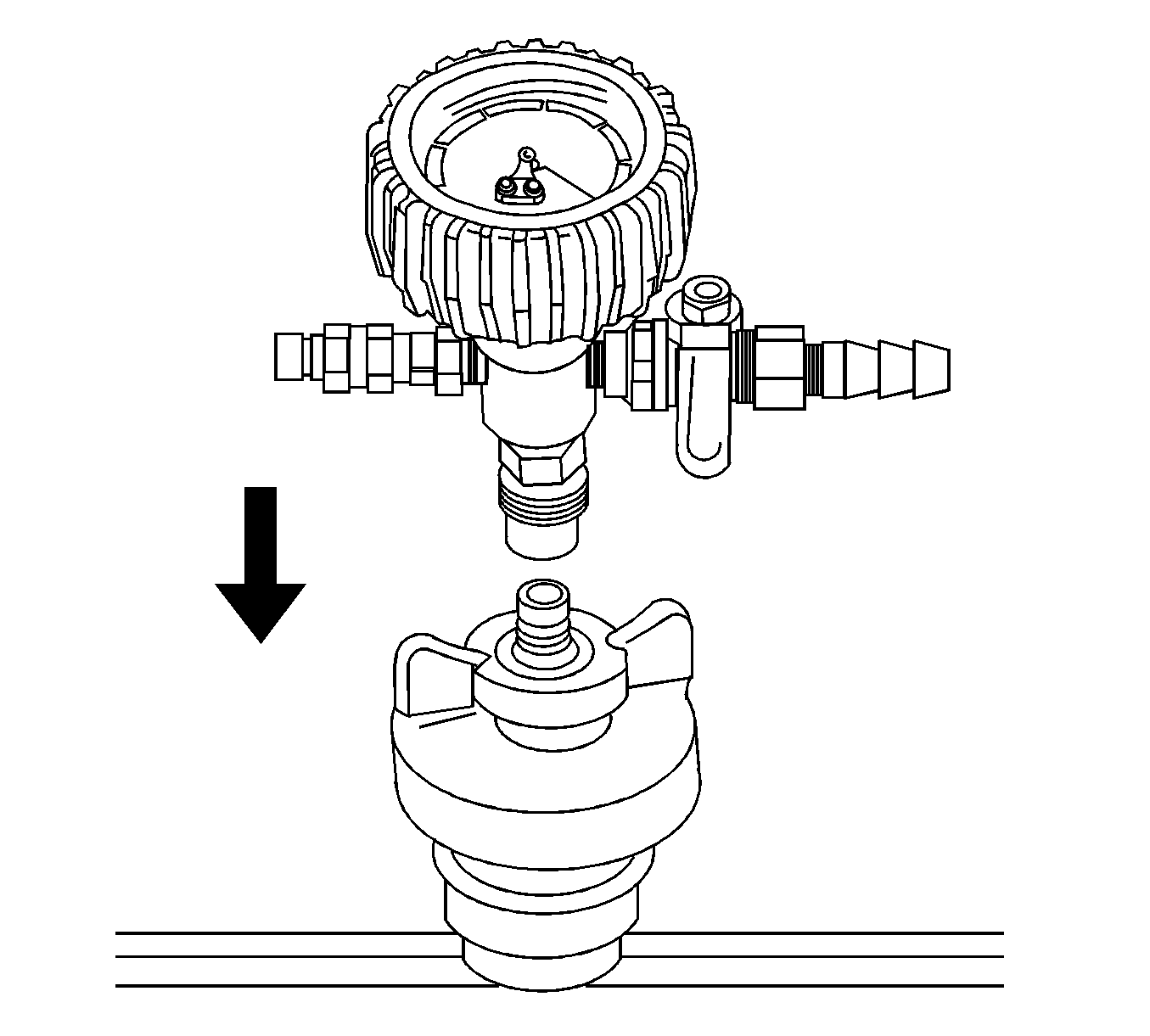
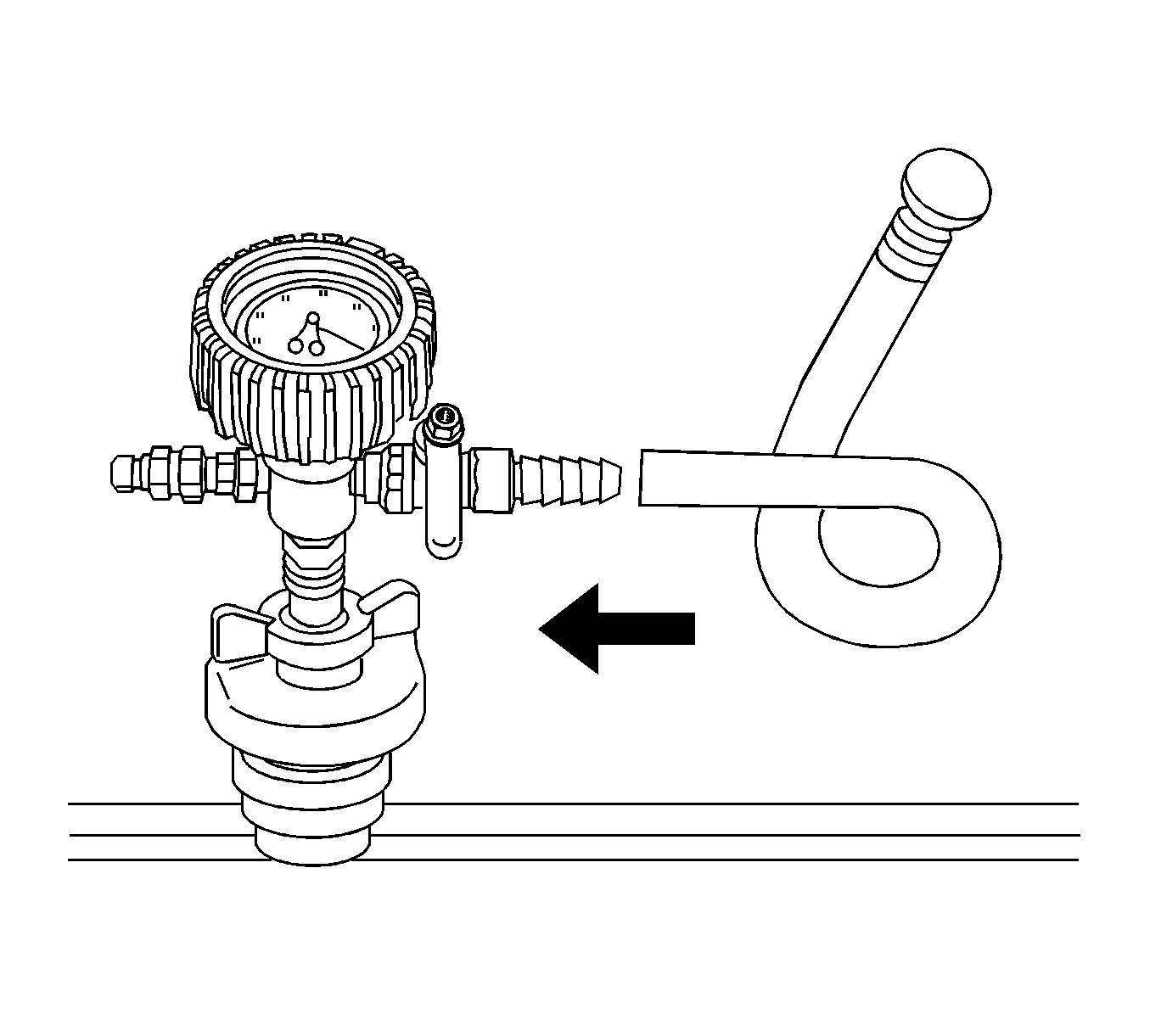
Ensure that the valve is closed.
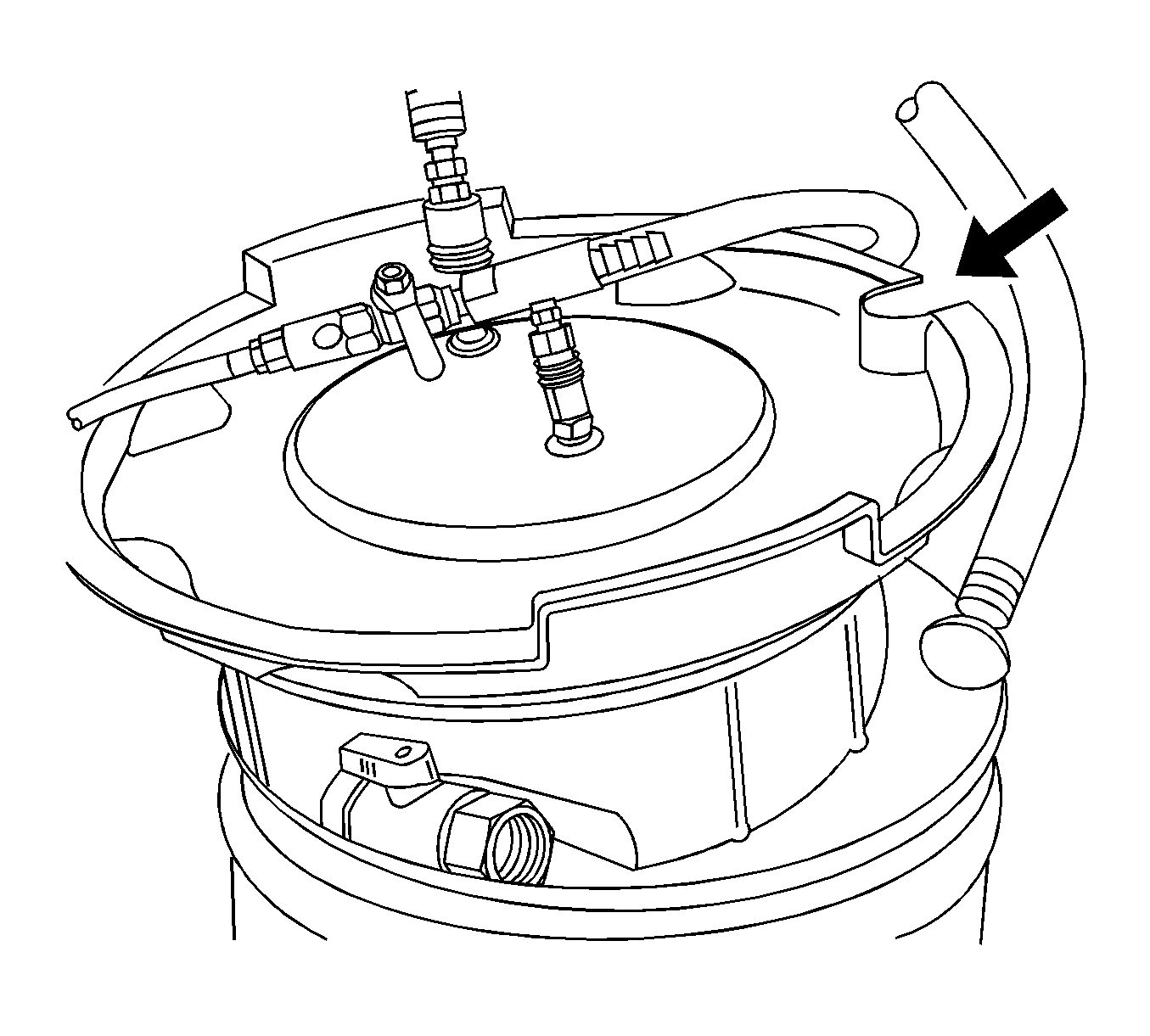
Note: Use a 50/50 mixture of DEX-COOL antifreeze and clean, drinkable water.
Always use more coolant than necessary. This will eliminate air from being drawn into the cooling system.Note: Prior to installing the vacuum tank onto the graduated reservoir, ensure that the drain valve located on the bottom of the tank is closed.

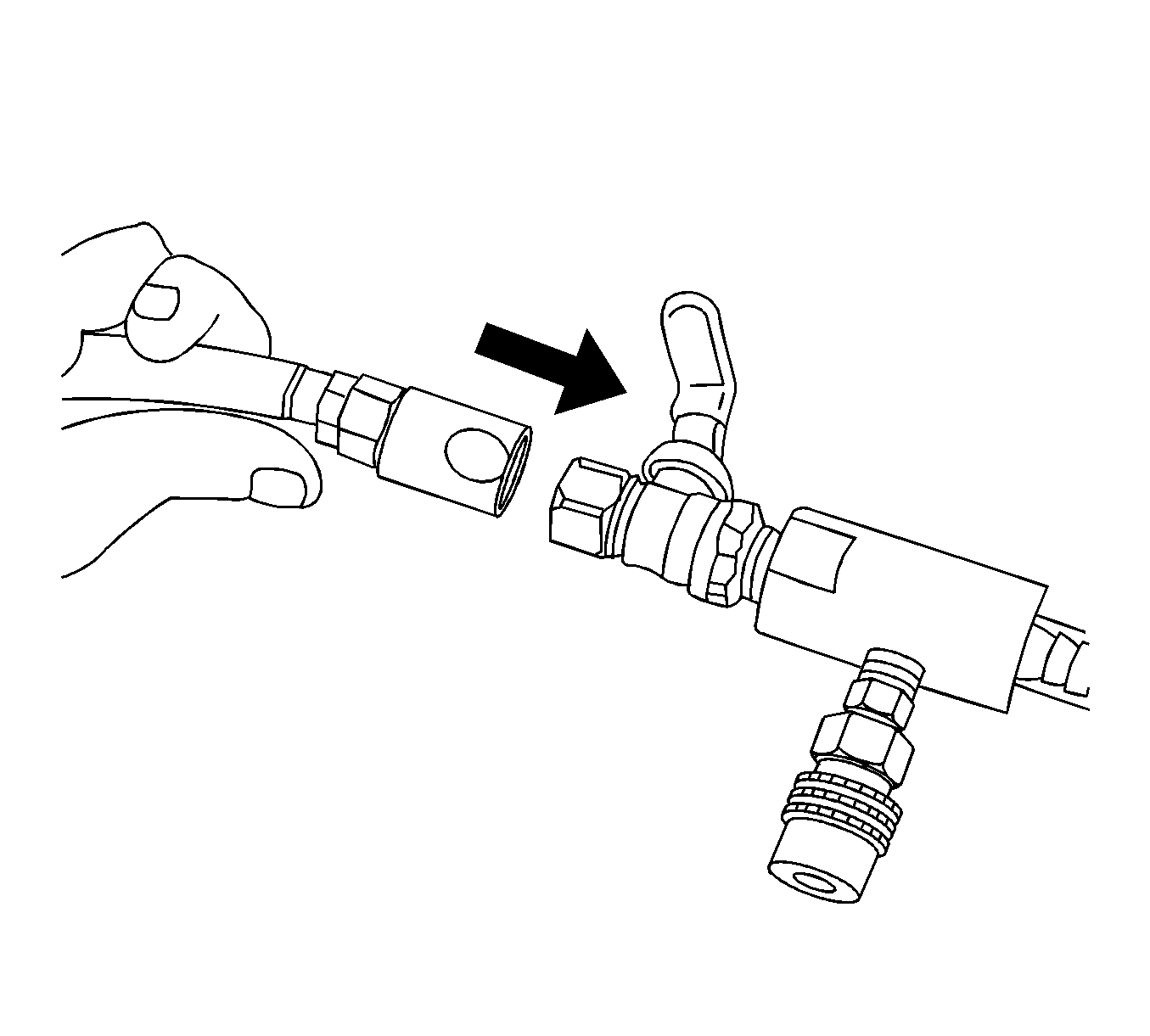
Ensure the valve on the venturi assembly is closed.
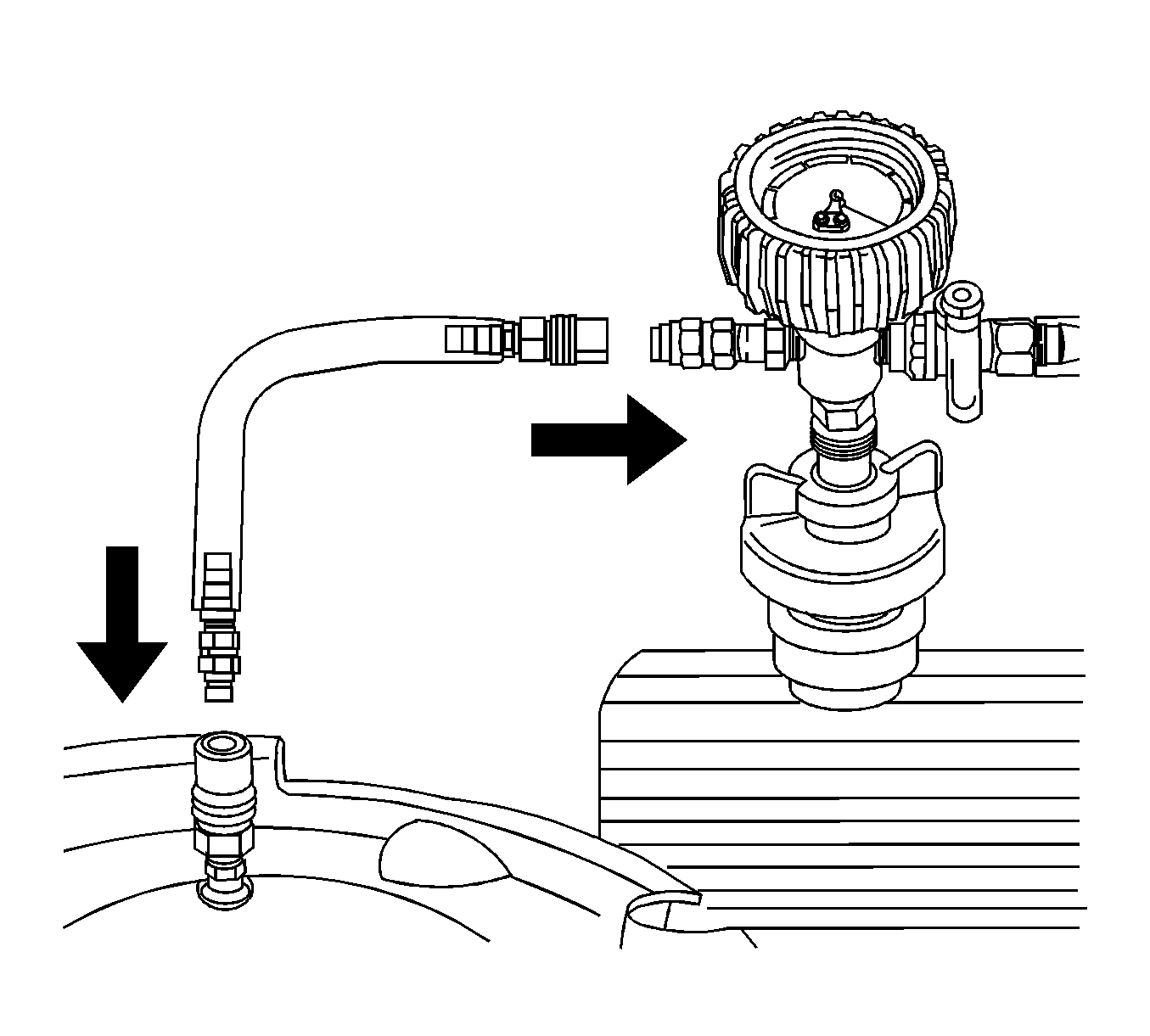

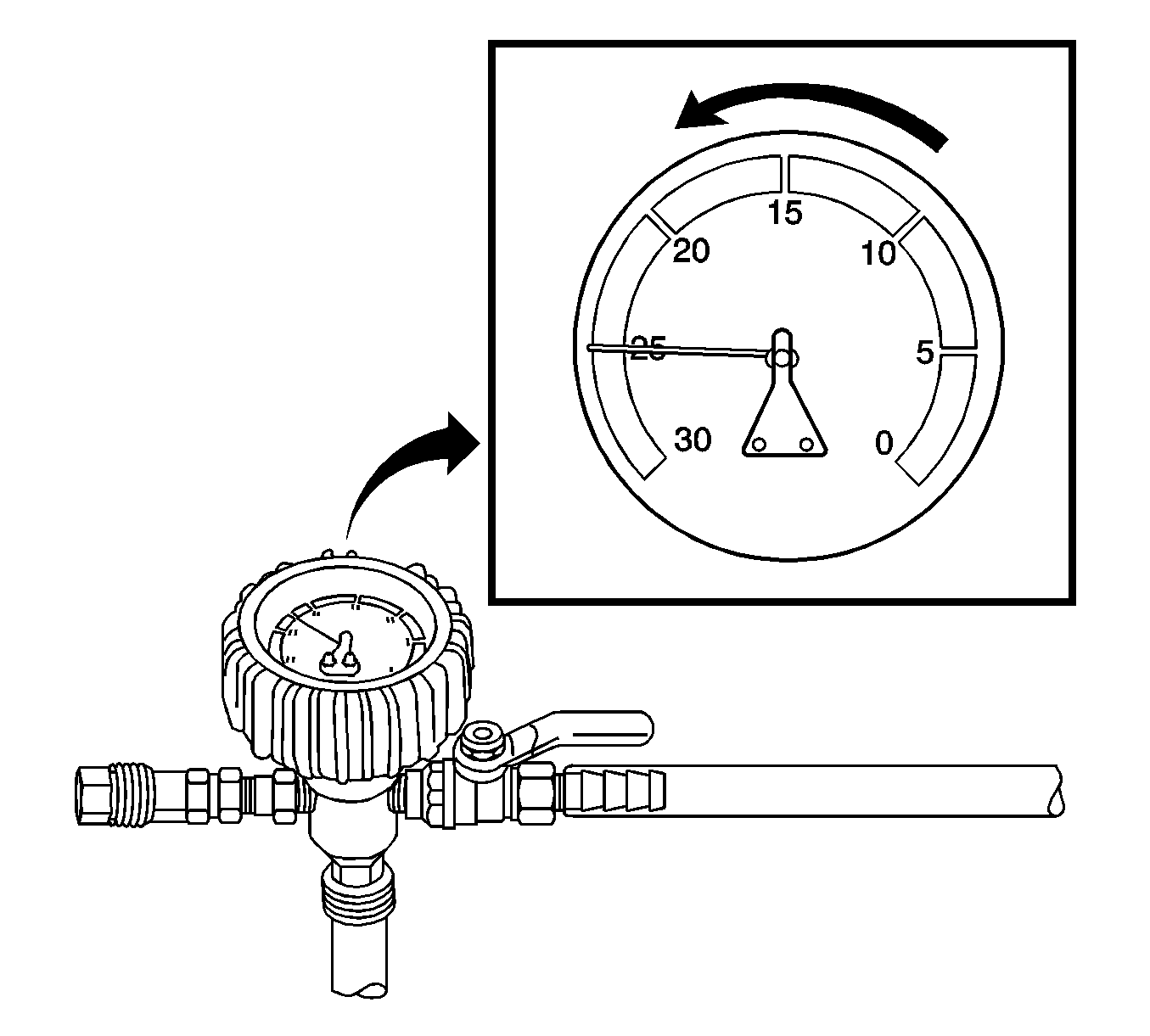
Cooling hoses may start to collapse. This is normal due to vacuum draw.
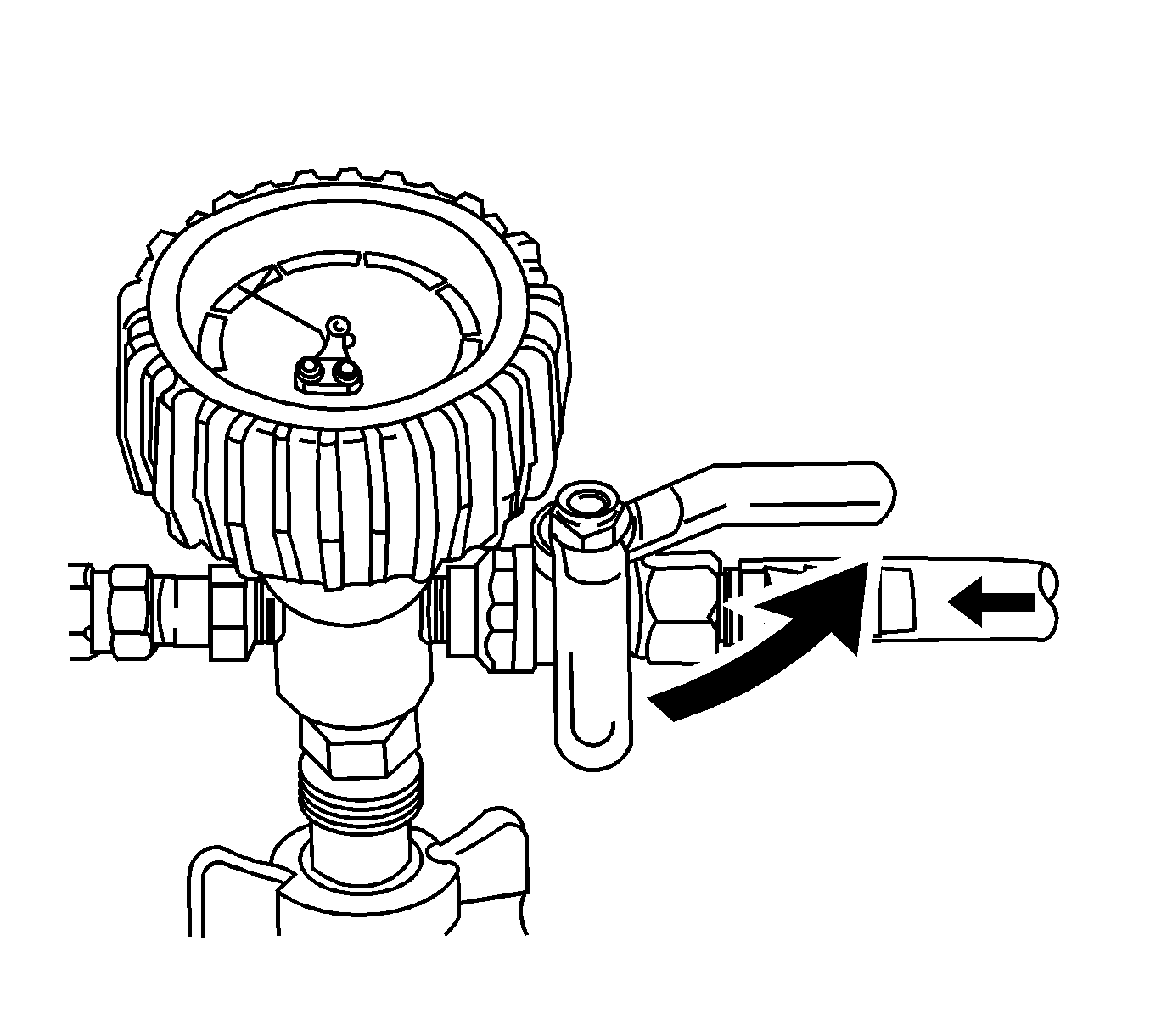
If vacuum loss is observed, refer to Loss of Coolant.
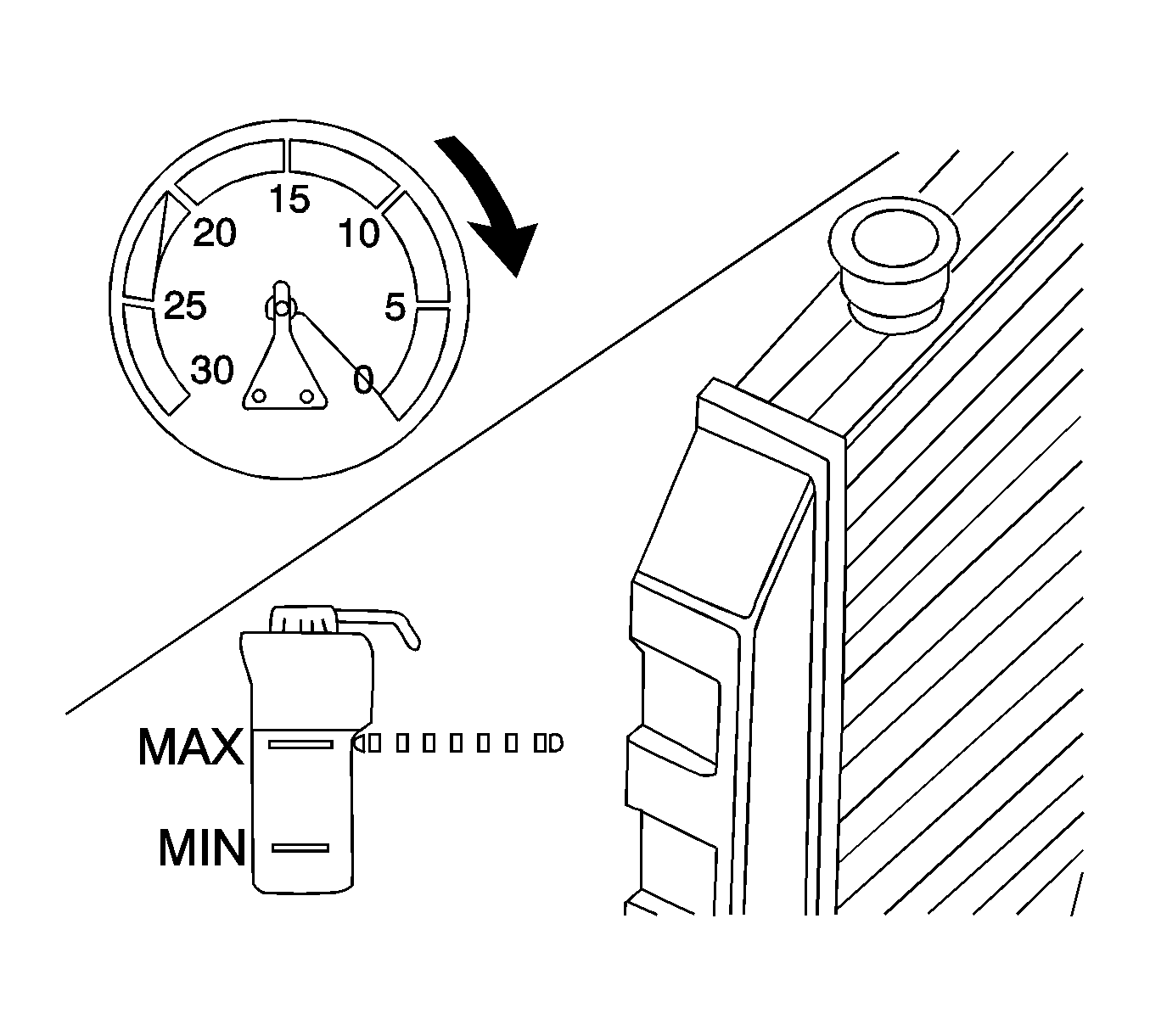
Note: After filling the cooling system, the extraction hose can be used to remove excess coolant to achieve the proper coolant level.
